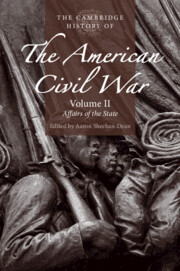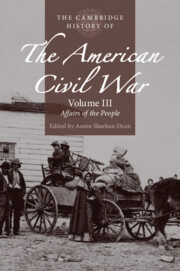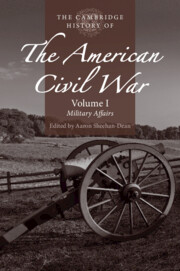Refine search
Actions for selected content:
15418 results in Military history
2 - Strategic Culture
- from Part I - Theoretical Frameworks
-
-
- Book:
- The Culture of Military Organizations
- Published online:
- 05 October 2019
- Print publication:
- 17 October 2019, pp 33-52
-
- Chapter
- Export citation
12 - The Weight of the Shadow of the Past
- from Part II - Land Forces
-
-
- Book:
- The Culture of Military Organizations
- Published online:
- 05 October 2019
- Print publication:
- 17 October 2019, pp 272-298
-
- Chapter
- Export citation
Dedication
-
- Book:
- The Culture of Military Organizations
- Published online:
- 05 October 2019
- Print publication:
- 17 October 2019, pp v-vi
-
- Chapter
- Export citation
Part IV - Air Forces
-
- Book:
- The Culture of Military Organizations
- Published online:
- 05 October 2019
- Print publication:
- 17 October 2019, pp 401-448
-
- Chapter
- Export citation
Part II - Land Forces
-
- Book:
- The Culture of Military Organizations
- Published online:
- 05 October 2019
- Print publication:
- 17 October 2019, pp 53-318
-
- Chapter
- Export citation
Index
-
- Book:
- The Culture of Military Organizations
- Published online:
- 05 October 2019
- Print publication:
- 17 October 2019, pp 463-474
-
- Chapter
- Export citation
14 - The Royal Navy, 1900–1945
- from Part III - Maritime Forces
-
-
- Book:
- The Culture of Military Organizations
- Published online:
- 05 October 2019
- Print publication:
- 17 October 2019, pp 321-350
-
- Chapter
- Export citation
10 - Military Culture, Military Efficiency, and the Red Army, 1917–1945
- from Part II - Land Forces
-
-
- Book:
- The Culture of Military Organizations
- Published online:
- 05 October 2019
- Print publication:
- 17 October 2019, pp 226-246
-
- Chapter
- Export citation
9 - Imperial Japanese Army Culture, 1918–1945
- from Part II - Land Forces
-
-
- Book:
- The Culture of Military Organizations
- Published online:
- 05 October 2019
- Print publication:
- 17 October 2019, pp 208-225
-
- Chapter
- Export citation
8 - The Culture of the British Army, 1914–1945
- from Part II - Land Forces
-
-
- Book:
- The Culture of Military Organizations
- Published online:
- 05 October 2019
- Print publication:
- 17 October 2019, pp 185-207
-
- Chapter
- Export citation
Copyright page
-
- Book:
- The Culture of Military Organizations
- Published online:
- 05 October 2019
- Print publication:
- 17 October 2019, pp iv-iv
-
- Chapter
- Export citation
5 - German Army Culture, 1871–1945
- from Part II - Land Forces
-
-
- Book:
- The Culture of Military Organizations
- Published online:
- 05 October 2019
- Print publication:
- 17 October 2019, pp 100-120
-
- Chapter
- Export citation
4 - “Playing a Very Bold Game”
- from Part II - Land Forces
-
-
- Book:
- The Culture of Military Organizations
- Published online:
- 05 October 2019
- Print publication:
- 17 October 2019, pp 79-99
-
- Chapter
- Export citation
18 - US Air Force Culture, 1947–2017
- from Part IV - Air Forces
-
-
- Book:
- The Culture of Military Organizations
- Published online:
- 05 October 2019
- Print publication:
- 17 October 2019, pp 426-448
-
- Chapter
- Export citation

The Cambridge History of the American Civil War
-
- Published online:
- 11 October 2019
- Print publication:
- 31 October 2019

The Cambridge History of the American Civil War
-
- Published online:
- 11 October 2019
- Print publication:
- 31 October 2019

The Cambridge History of the American Civil War
-
- Published online:
- 11 October 2019
- Print publication:
- 31 October 2019
Appendices
-
- Book:
- The Long Search for Peace
- Published online:
- 27 September 2019
- Print publication:
- 09 October 2019, pp 840-851
-
- Chapter
- Export citation
Contents
-
- Book:
- The Long Search for Peace
- Published online:
- 27 September 2019
- Print publication:
- 09 October 2019, pp v-xii
-
- Chapter
- Export citation
7 - An intractable dispute
- from Part 1 - Actor and observer
-
- Book:
- The Long Search for Peace
- Published online:
- 27 September 2019
- Print publication:
- 09 October 2019, pp 158-184
-
- Chapter
- Export citation
